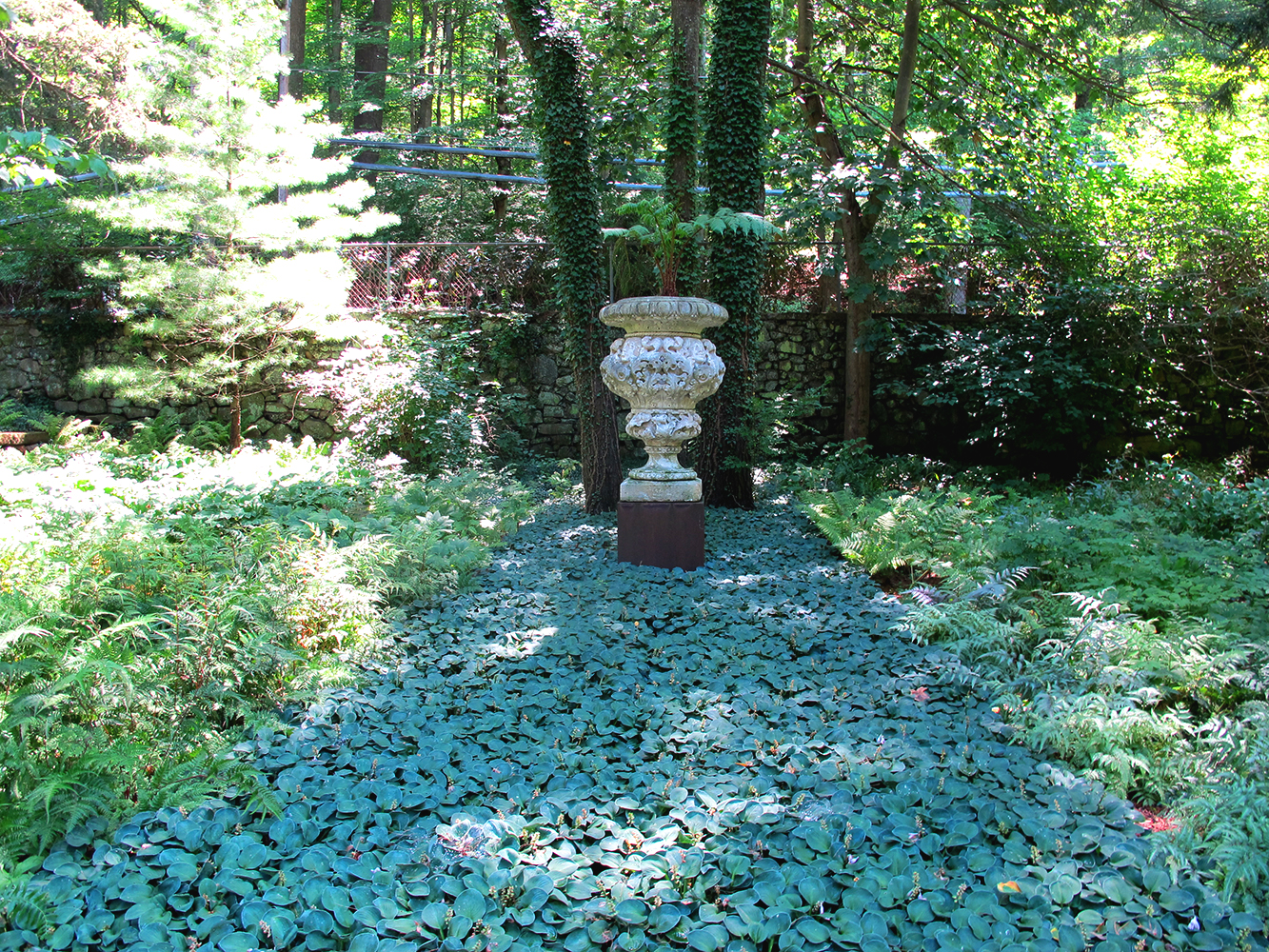Small Gardens
Not many of us have access to the means and time necessary to maintain a large garden. Living in a city or the suburbs often means living on smaller lot sizes or in apartments and condos. Even larger lots can present challenges when you consider how much time and energy you are willing to put into your space. Creating a garden to fit your space (mentally or physically) that also fulfills your outdoor needs can be a challenge.
The first thing to consider when designing a small garden is to identify how you will most likely use the space. You may only be able to fulfill a few of your “wants” so make sure they’re the most important to you. Some people want a place to sit outside and drink their morning coffee while others want a quiet and pretty place to meditate or a sunny spot to grow vegetables. Once you can picture yourself really using and living in your garden then you can begin to design toward that vision.
The tall fence and bamboo help to mitigate the scale of the house in this small front entry garden while taking up very little square footage. Smaller grasses and the mystery of space beyond draw the visitor to the front door.
The most important design element to consider for small spaces is scale. This means everything from the size of plants to the relative size of leaves and what materials or features you add. Large plants can quickly dominate a space and make it feel smaller than it actually is. There are many resources online for finding plants that are naturally small or have dwarf varieties. If you are in the Pacific Northwest then Great Plant Picks has an excellent list: https://www.greatplantpicks.org/plantlists/by_theme/small_urban.
Do your plant research and pay special attention to mature sizes as some plants grow slowly but will eventually outgrow the space. When shopping for plants also pay attention to the foliage and branching structure. Trees and shrubs with smaller leaves and wider branch structures that let in more light will help the garden feel more airy.
Espaliered trees fit well in smaller landscapes and can be trained to many different shapes and sizes.
Creating deliberate views is another design trick to consider. If you have a large enough space for a path then make it meandering with portions hidden so you can’t see the whole garden at one time. If adjacent properties have pretty landscapes or if you can see a distant feature then make sure you frame it. We call these “borrowed” views.
Conversely, if the views around you are undesirable then determining how to create a more private area is priority. Rather than using only one type of screening around the perimeter consider a combination of materials, plants, and structures to break up a continuous border.
If you need privacy from adjacent tall buildings then planting trees with higher and wider canopies will help create privacy. Plant placement to either hide or reveal surroundings is crucial for creating the type of space that you will want to use.
Borrowed view: the background trees are not on the property but help create a more expansive feel. The paving and pot add interest and draw the visitor to the small bench in back. Photo by Miranda Estes Photography
A large variety of materials can be used to create screening: this steel wall hides the garage and alley from view while tall plants on the sides screen neighbors in this small back yard.
Another trick is to create a forced perspective. If you have a long narrow yard then having a focal feature at the far end with a path or lawn that tapers toward the feature will make the space look longer than it really is. This is more difficult to pull off in shallower spaces as your eye will quickly discover the deceit.
This bed of Blue Mouse Ears Hosta is wider at the front in order create the illusion that the urn is further back than it really is.
Attention to detail is crucial in smaller spaces as it is easier to spot poor craftsmanship or materials. Luckily, with a smaller space you need less material to begin with so you can focus on purchasing quality over quantity. Add features that make you happy and enhance your enjoyment of the space rather than just adding them because you think you need them.
For example, water features often require more maintenance than people realize and stop running or get turned off. Gazebos and arbors might get a lot of use for the first year but then the spiders and bees move in and their use falls off. With small spaces you will want only the things that will keep you happy in the long term since you don’t have room for lots of abandoned features.
This small back yard is transformed with a variety of materials, plants, and furnishings that reflect the owner’s vibrant character. Care was taken with every detail and a variety of pots and features can be swapped out to keep it feeling fresh. Photo by Miranda Estes Photography
Care was taken in this small front yard to match the steel arbor to the architecture while keeping it light and airy to avoid feeling claustrophobic. The stone “rug” adds character and breaks up the monotony of the brick.
Finally, make sure you have a solid understanding of how your space feels throughout the day and year. If you want a sitting area for the morning then make sure you know where the best sun exposure is to place your seating or get furniture that you can easily move.
If you know you will want to get outside in any weather then make sure you have some shelter from prevailing winds or rains. If you’re in a hot climate then finding or creating shade is a priority. Spending time in your space before you start to build will give you valuable insight into how it really feels to be out there – get outside!







